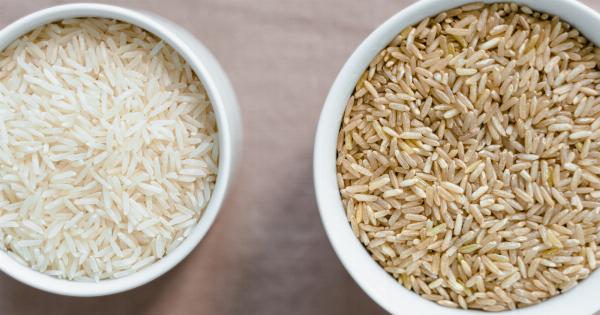Fiber is considered an essential component of our diet and can provide numerous health benefits such as reducing cholesterol levels, preventing constipation, and aiding in weight loss. There are two types of fiber: soluble and insoluble.
Soluble fiber dissolves in water and forms a gel-like substance in the digestive tract, while insoluble fiber does not dissolve in water and adds bulk to the stool. In this article, we will explore the science of soluble and insoluble fibers and their impact on our health.
What is Soluble Fiber?
Soluble fiber is a type of fiber that dissolves in water and forms a gel-like substance in the digestive tract. This gel-like substance slows down the digestion process and makes you feel full for longer periods of time.
Soluble fiber can be found in foods such as fruits, vegetables, beans, and oats. It is also found in psyllium husk, which is a common ingredient in fiber supplements.
A diet rich in soluble fiber has been shown to reduce cholesterol levels and lower the risk of heart disease. Soluble fiber can also help regulate blood sugar levels by slowing down the absorption of sugar into the bloodstream.
This can be particularly beneficial for individuals with diabetes.
What is Insoluble Fiber?
Insoluble fiber is a type of fiber that does not dissolve in water and adds bulk to the stool. It can be found in foods such as wheat bran, nuts, and vegetables.
Insoluble fiber helps regulate bowel movements and prevents constipation by adding bulk to the stool. It also promotes the growth of beneficial bacteria in the gut, which can improve digestion and overall gut health.
The Benefits of Both Soluble and Insoluble Fiber
Both soluble and insoluble fibers are beneficial to overall health. Soluble fiber can help lower cholesterol levels, regulate blood sugar levels, and promote feelings of fullness.
Insoluble fiber can help regulate bowel movements, prevent constipation, and improve gut health. A diet rich in both types of fiber has been shown to have numerous health benefits, including a reduced risk of heart disease, stroke, and certain types of cancer.
How to Get More Fiber in Your Diet
Getting more fiber in your diet can be easy and delicious. Some tips on how to increase your fiber intake include:.
- Eating more fruits and vegetables
- Add beans or legumes to your meals
- Choose whole-grain bread, pasta, and cereals
- Snack on nuts and seeds
- Incorporate psyllium husk supplements into your diet
Recommended Daily Intake of Fiber
The recommended daily intake of fiber is 25 grams for women and 38 grams for men. However, most people do not get enough fiber in their diet.
It is recommended to gradually increase your fiber intake to prevent digestive discomfort such as bloating and gas.
Conclusion
Fiber is an essential component of our diet and can provide numerous health benefits. Soluble fiber helps lower cholesterol levels and regulate blood sugar levels, while insoluble fiber regulates bowel movements and improves gut health.
A diet rich in both types of fiber has been shown to have numerous health benefits, including a reduced risk of heart disease, stroke, and certain types of cancer. Incorporating more fruits, vegetables, beans, and whole grains into your diet can help increase your fiber intake and improve your overall health.




























